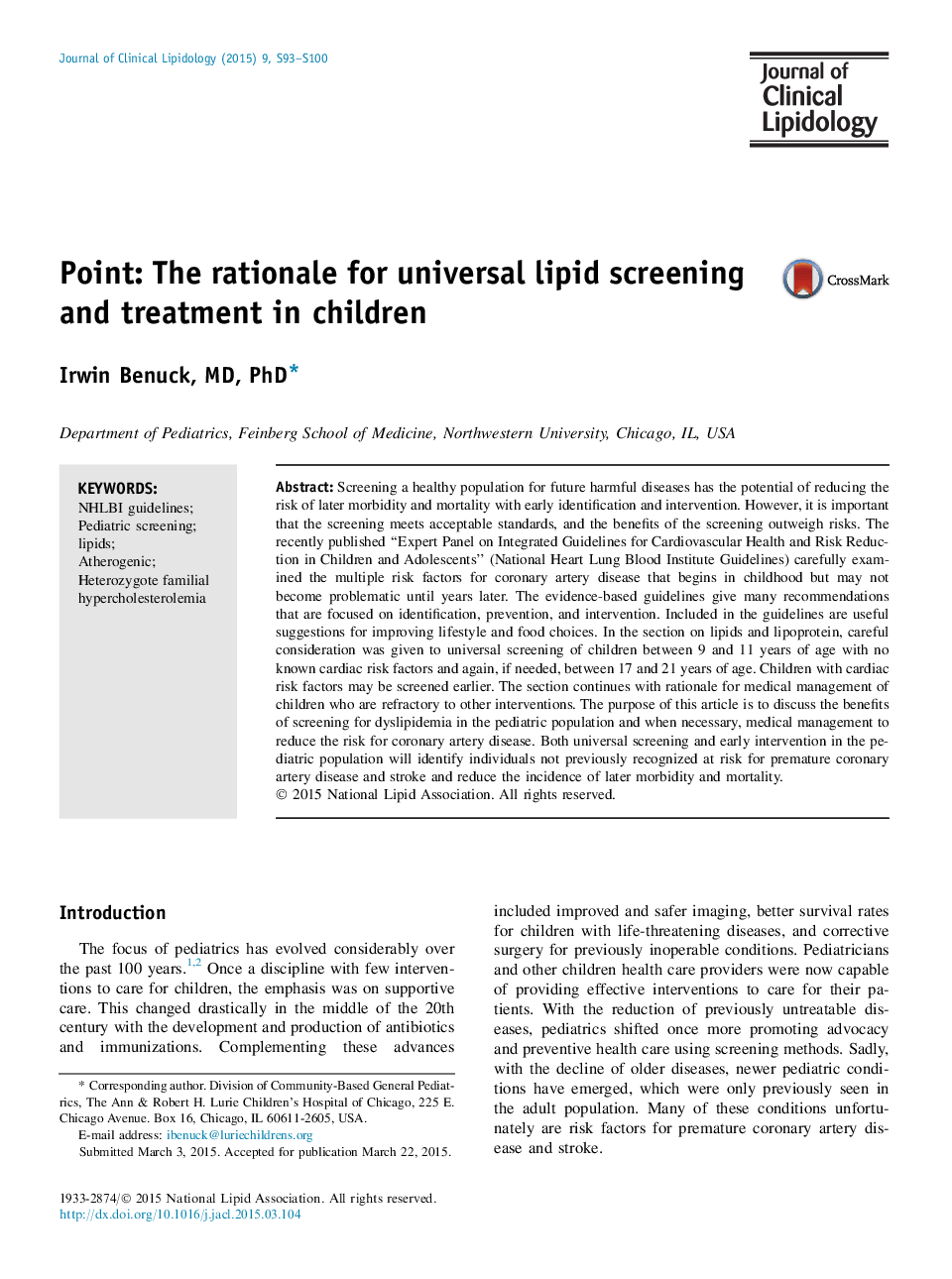| Article ID | Journal | Published Year | Pages | File Type |
|---|---|---|---|---|
| 2965817 | Journal of Clinical Lipidology | 2015 | 8 Pages |
•Universal lipid screening in children will identify many at risk patients and families.•Without universal screening, many patients and families will be missed.•Because atherosclerosis begins in childhood, early treatment will reduce disease.•Pediatric healthcare providers are well positioned to provide most counseling and care.
Screening a healthy population for future harmful diseases has the potential of reducing the risk of later morbidity and mortality with early identification and intervention. However, it is important that the screening meets acceptable standards, and the benefits of the screening outweigh risks. The recently published “Expert Panel on Integrated Guidelines for Cardiovascular Health and Risk Reduction in Children and Adolescents” (National Heart Lung Blood Institute Guidelines) carefully examined the multiple risk factors for coronary artery disease that begins in childhood but may not become problematic until years later. The evidence-based guidelines give many recommendations that are focused on identification, prevention, and intervention. Included in the guidelines are useful suggestions for improving lifestyle and food choices. In the section on lipids and lipoprotein, careful consideration was given to universal screening of children between 9 and 11 years of age with no known cardiac risk factors and again, if needed, between 17 and 21 years of age. Children with cardiac risk factors may be screened earlier. The section continues with rationale for medical management of children who are refractory to other interventions. The purpose of this article is to discuss the benefits of screening for dyslipidemia in the pediatric population and when necessary, medical management to reduce the risk for coronary artery disease. Both universal screening and early intervention in the pediatric population will identify individuals not previously recognized at risk for premature coronary artery disease and stroke and reduce the incidence of later morbidity and mortality.
